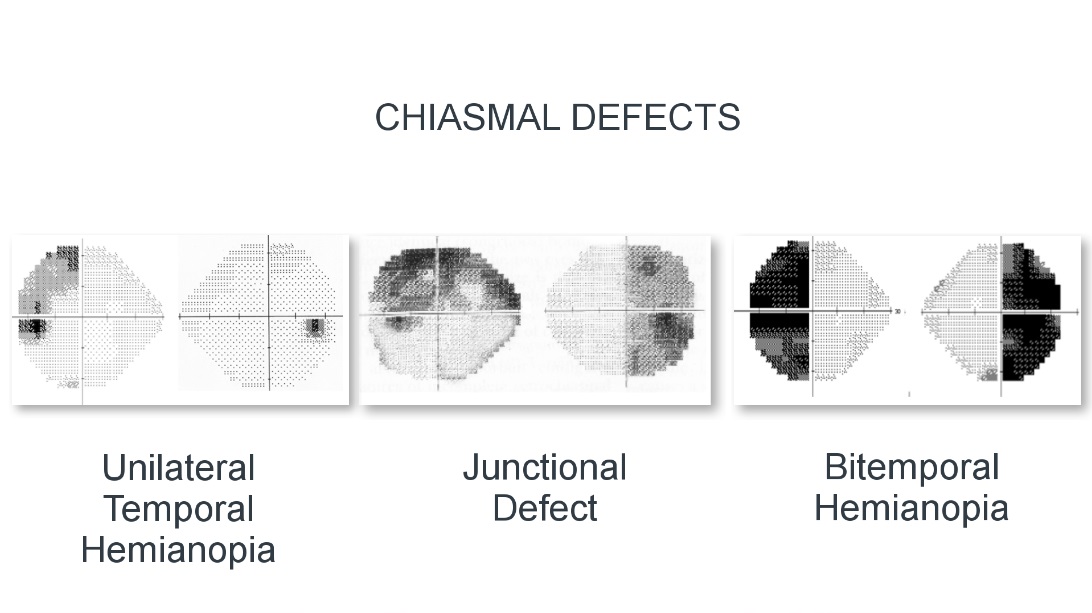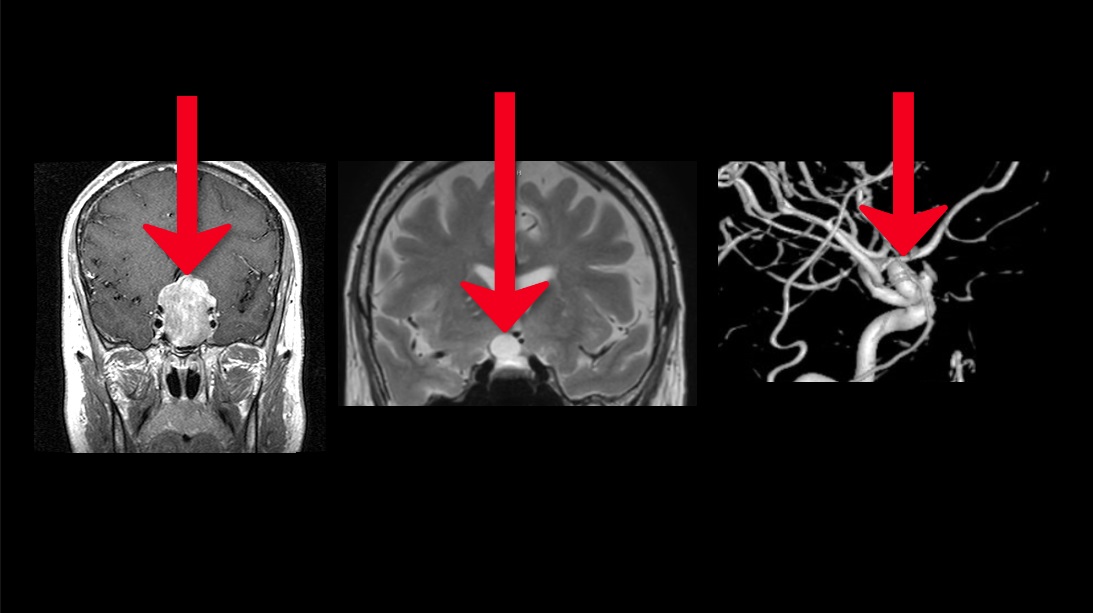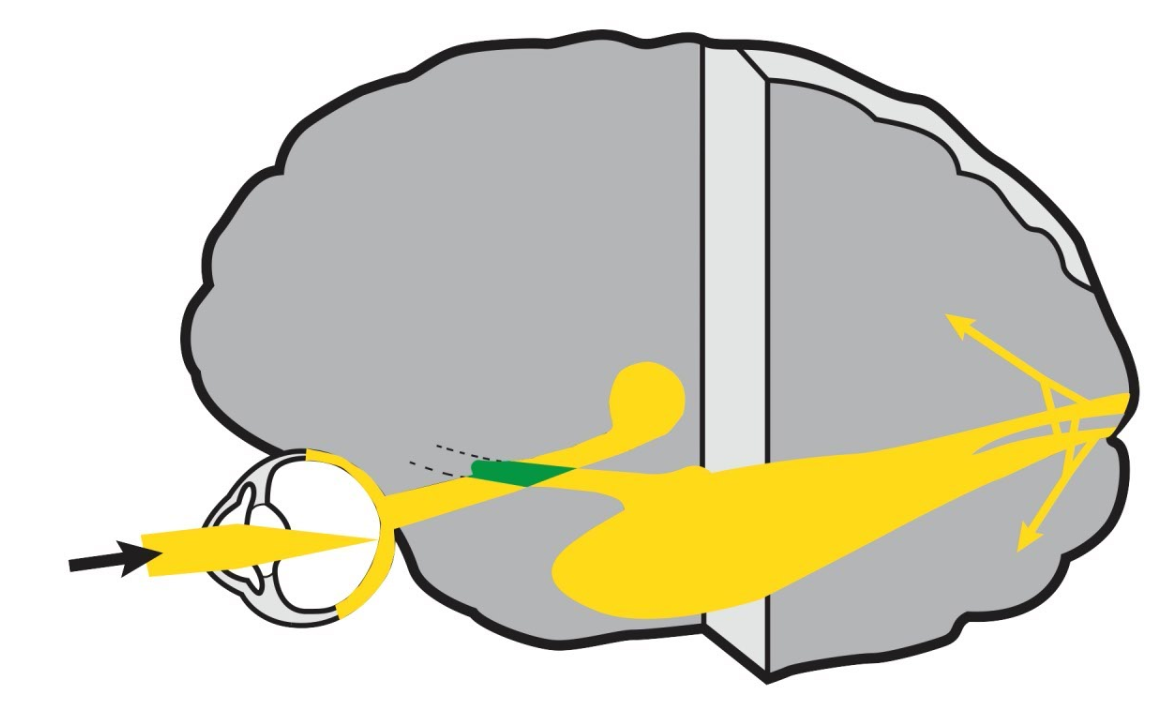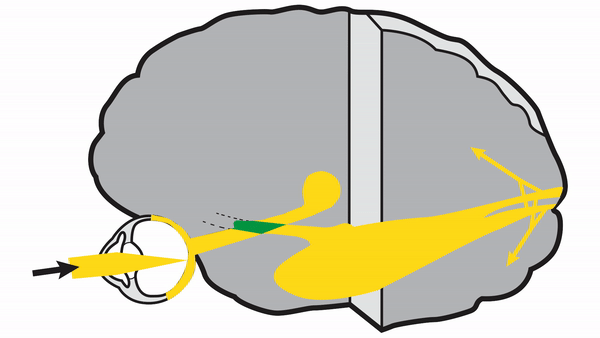Chiasmal Segment
- Unilateral temporal hemianopic defect: lesion lies in the ipsilateral optic nerve, damaging primarily fibers from the ipsilateral nasal retina which are especially vulnerable
- Temporal hemianopic defect in one eye and nerve fiber bundle defect in other eye: lesion lies at the junction of the optic chiasm, damaging the ipsilateral optic nerve and axons from the contralateral nasal retina that loop into the ipsilateral optic nerve
- Bitemporal hemianopic defects: lesion lies in or around the optic chiasm, preferentially damaging the nasal crossing fibers, which are especially vulnerable
- Here is another look at the three patterns of visual field defects of chiasmal area lesions



